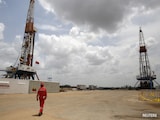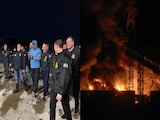The European Space Agency's (ESA) groundbreaking Cluster mission, a constellation of four satellites investigating the sun-earth connection, is nearing its conclusion with the controlled re-entry of its first satellite, Salsa, into Earth's atmosphere. Launched in 2000, the Cluster mission has significantly advanced our understanding of Earth's magnetic shield and the delicate interplay between our planet and the Sun.
The Cluster mission comprised four identical spacecraft named Rumba, Salsa, Samba, and Tango. These "sisters" orbited Earth in a precise formation, allowing for simultaneous measurements from multiple points within Earth's magnetosphere, the protective shield generated by our planet's magnetic field.
"The Cluster satellites have highly eccentric orbits that are strongly impacted by the gravitational pull of the sun and the moon," says Bruno Sousa, Head of Inner Solar System Mission Operations at ESOC. "Sometimes, they drop steeply, by more than 30 km in a single orbit. Other times, they don't drop at all."
"This month, we tweaked Salsa's orbit to make sure it experiences its final steep drop from an altitude of roughly 110 km to 80 km in September. This gives us the greatest possible control over where the spacecraft will be captured by the atmosphere and begin to burn up."
Salsa Takes the Lead:
Salsa will be the first of the Cluster satellites to make its fiery descent back to Earth, re-entering the atmosphere over the South Pacific. Despite a planned lifespan of just two years, the Cluster mission has remarkably stretched to nearly 24 years, a testament to the ingenuity of its design and the dedication of the ESA team.
A Treasure Trove of Discoveries:
Over their extended mission, the Cluster satellites have yielded a wealth of scientific data, contributing to the publication of over 3,200 research papers. These insights have shed light on the sun's influence on Earth's environment, the dynamic processes within the magnetosphere, and the potential hazards posed by space weather events.
Throughout its tenure, the Cluster mission has significantly improved our understanding of the sun's impact on Earth's environment, the processes within Earth's magnetosphere, and the potential hazards of space weather. As the sun exhibits heightened activity, the ongoing observations will provide crucial insights.
In the remaining months of scientific activity, the satellites will pass through the region where charged particles are accelerated, leading to the creation of Earth's auroras.















